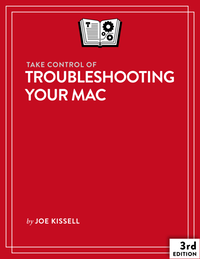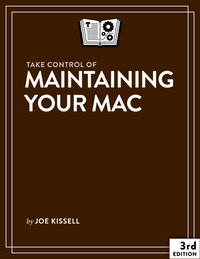Apple Pay, Coin, and the Still-Bulging Wallet
As I’ve mentioned a few times (on this site and elsewhere), I’m not interested in buying all the shiny new things just because they’re shiny and new. I don’t buy gadgets hoping I’ll eventually find a use for them; rather, I start with problems I already have and look for technological solutions. And an actual problem I have, which has only become more irritating in recent years, is a bulging wallet.
To be fair, we’re not talking George Costanza levels of bulging. But still, my wallet has way too much stuff in it. Every few months or so I go through it and see what I can offload, and there are dozens of cards in my desk drawer that I use so rarely that I don’t bother keeping them in my wallet. Even so, I always carry certain debit and credit cards, because I might at any time need to get cash or make a deposit at an ATM, pay for things either as personal or business expenses, and so on. And I carry a half dozen loyalty cards, because I never know when I might have to stop at the supermarket, pharmacy, or whatever. And my health insurance card, zoo and library membership cards, driver’s license, a few business cards, and maybe even a little cash.
In short: way too much stuff. I don’t like the way it makes my pocket bulge, I don’t like having to root through a bunch of cards every time I make a transaction, and I don’t like all the aggravation I’d have to go through to cancel or replace everything if my wallet were lost or stolen. But the current contents of my wallet are about as minimal as I can make them given my lifestyle. I’m not going to repack it every morning with just the items I think I might need that day—it would be a huge hassle, and I’d guess wrong more often than not.
So, I was extremely enthusiastic about a couple of recent technologies that promised to solve this problem. But so far, I’ve been unimpressed with the results, in that even though the tech (sort of, sometimes) works, it hasn’t actually helped me slim down my wallet.
##Coin
Announced back in 2013, Coin was supposed to replace all your cards that have magnetic stripes. It’s a device the exact size and shape as a credit card, and it has a magnetic stripe on the back. But it’s programmable via Bluetooth—you use a smartphone app to load up to eight cards at a time onto it (after scanning them with an included reader), and you can store as many as you like in the app. Press a button to select the card you want it to mimic at any particular moment, swipe it, and the result is (in theory) exactly the same as swiping the original card.
If that sounds suspiciously insecure, don’t worry; there are in fact a number of excellent security measures in place to prevent the Coin from being used fraudulently. In fact, security is the least of my concerns right now; basic functionality is much more of an issue.
I pre-ordered my Coin way back in November 2013, and it finally arrived today. I immediately fired up the app, paired the device, and started adding cards to it. The first few were accepted without difficulty. But the reader completely choked on several of my loyalty cards, refusing to get any data from them at all even after dozens of attempts. (And you can’t work around this just by entering a number manually; the swipe step is one of those essential security measures to prove you actually have the physical card.) The result is that I still have to keep all those cards in my wallet. (I’m talking to Coin’s tech support department about this, but so far I’m not optimistic about a fix.)
I reviewed Coin’s FAQ to see whether it might offer any suggestions, and that’s when I saw some newly added questions and answers that weren’t there back when I pre-ordered mine. One that particularly caught my attention was the statement that Coin cannot be used in readers with motorized mechanisms to ingest and eject cards—like all the ATMs at every branch of my bank. So… I guess I’ll have to keep all my debit cards in my wallet too.
In other words, I have this incredible new gadget that can, in theory, substitute for all my debit, credit, and loyalty cards, except that I still need to carry the actual cards—either because Coin won’t work in a machine I need to use or because it won’t read my physical card in the first place.
By adding Coin to my wallet, I was able to remove two cards, for a net reduction of one. Big fat deal. All this tech, but it didn’t actually solve the problem it promised to solve.
I know there are a number of competitors to Coin, such as Plastc and Wocket. Maybe one of these, or another similar product, would succeed where Coin fails for me, but I’m disinclined to spend a large sum of money to find out.
Surely, over time, some product of this sort will become sufficiently robust that it actually does what marketing claims. But right now, I’m feeling incredibly disappointed about this $50 gadget in my wallet that didn’t make good on the promise the company made when I ordered it a year and a half ago.
##Apple Pay
Last year, along with the iPhone 6 and 6 Plus, Apple announced Apple Pay, a payment system that lets you tap your iPhone (or, now, your Apple Watch) on a payment terminal to securely pay for something with a credit or debit card. Once again, the promise was a replacement for the bulging wallet. Put all your credit and debit cards into Apple Pay and you won’t have to carry them around anymore.
Well, funny story.
I got an iPhone 6. And I added my cards to Apple Pay. And then I had to wait months before I happened upon a store that accepts Apple Pay. The system works just fine when I’m able to use it, but that’s very seldom. Only two or three of the stores I shop at with any regularity can accept Apple Pay, which means I still have to carry all my cards.
And sure, the network is expanding, and eventually, more merchants will accept it than not. Even so, as long as there’s a reasonable chance that I’ll ever have to pay for something with a physical card, I can’t leave that card at home. And I have a hard time imagining a future in which I have no doubt that every mom-and-pop coffee shop, used book store, and vending machine I encounter will let me use my phone (or watch) instead of a card. Which means I expect to keep carrying my cards for a long, long time.
Apple recently announced that in iOS 9, Apple Pay will also be able to use rewards cards. Well…sure, but presumably only for stores that work with Apple Pay’s contactless system in the first place. Which means it will continue to have zero effect on the thickness of my wallet.
##What I’d Like
It makes no difference to me whether I pay with a tap of a phone, a swipe of a card, or some other gesture. What does matter to me is simplicity and clutter reduction. In this respect, I think a card with a magnetic stripe (or, soon, a chip-and-PIN card) is more likely to be a universal solution, at least in the foreseeable future, than something like Apple Pay. Bonus points if that card can also store and display barcodes, which would substitute for even more of my cards. (And yes, I know I can do that with an iPhone app, subject to many restrictions and qualifications.)
But these are merely technological details. What I really want, right now, is honesty from the companies pushing wallet-slimming “solutions” that in fact do nothing of the sort. I get it—the tech is still in development, still in its early stages. That’s fine. These things need lots of testing, buy-in from merchants and payment processors, equipment upgrades, whatever. I understand. But the fact is that the thing you buy today will not actually enable you to leave all (or even most, or perhaps any) of your cards at home. So don’t make claims you can’t deliver on. That’s all I’m asking, but it irritates me that I should have to ask.














